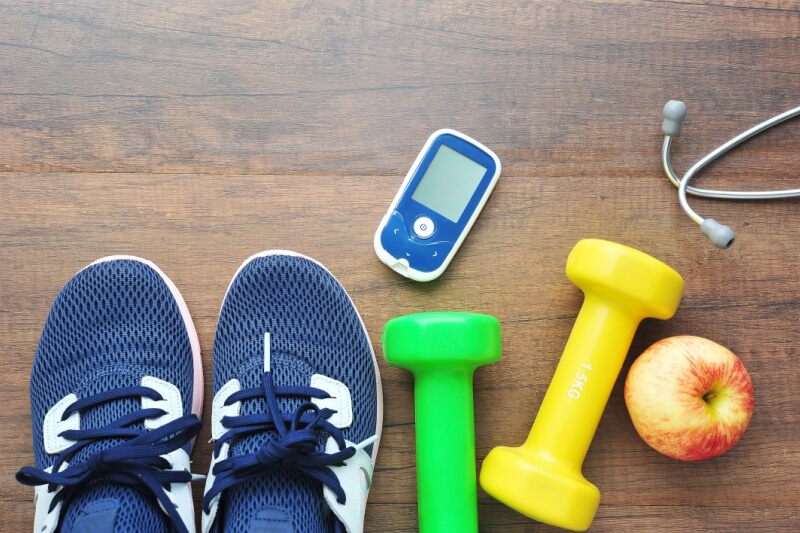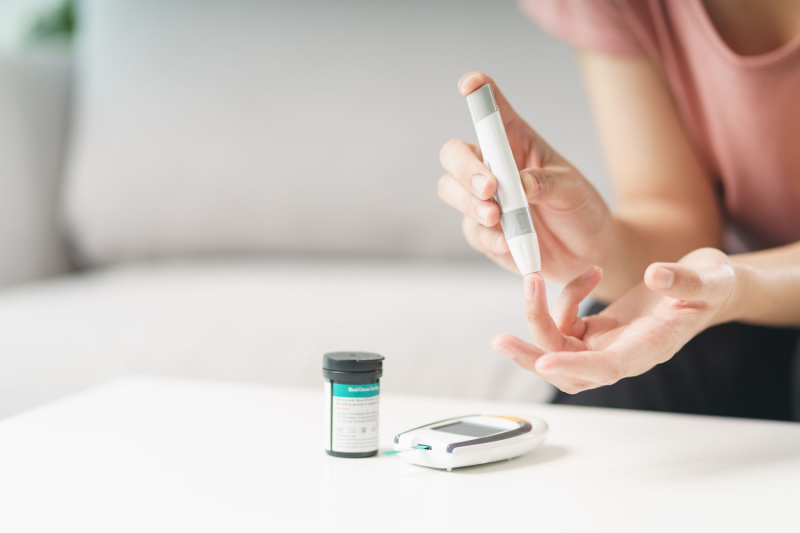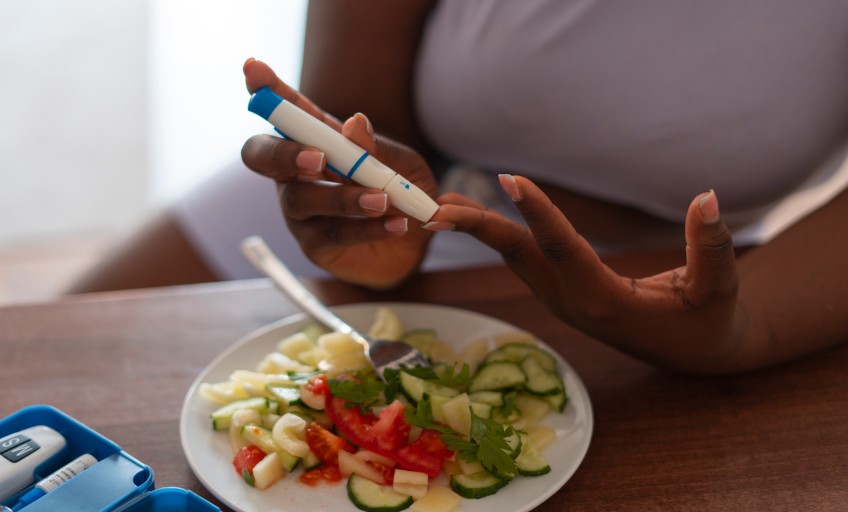Exercising can help the body respond better to insulin and lower blood sugar levels. Consult your doctor to get started with your customized exercise routine.
Exercising to stay active and healthy seems so tedious, isn’t it? You may even say it’s risky if you have diabetes. However, physical activities are crucial for people with diabetes since an active lifestyle increases the body’s sensitivity to insulin, letting you manage your diabetes better. But you don’t have to jump in and start training like an athlete. The intensity of your exercise can vary depending on what routine your healthcare expert suggests to make it enjoyable and safe. Although regular consultations with your doctor can help you safely exercise and enjoy your workouts, here is some advice to get you going!
इनके बारे में जानें:
Tips to exercise safely with diabetes

Here are some effective tips that you can incorporate into your daily life to exercise safely even if you have diabetes:
- Getting Started: Pre-exercise preparations
The first step to exercising safely while living with diabetes is consulting an expert. A doctor or healthcare expert can guide patients to the best exercise plan suited for their condition, thus minimizing the risk of any severe event.
- Blood sugar monitoring
Monitor your blood glucose level before each session. Too low blood sugar can cause complications such as hypoglycemia by further lowering your blood sugar levels during exercise. Hence, knowing your limits and maintaining frequent blood sugar monitoring is better.
- Proper nutrition and hydration
Proper hydration is crucial for people with diabetes to prevent severe fatigue and cramps, mainly due to exercising. Furthermore, blood glucose levels can be adversely affected due to dehydration. Therefore, people with diabetes must stay well-hydrated during and after exercising. A wholesome meal with carbs and proteins helps check blood glucose levels. Depending on their condition, people with diabetes must maintain proper nutrition to keep blood glucose levels within range.
- Being careful while exercising
Stop exercising if you feel weak or shaky. Check your blood glucose levels, and if they are lower than the expected range, take fast-acting carbohydrates like juice, candies or sugary soft drinks. Ensure your levels are normal, and only exercise when you feel better. Always start exercises with a warm-up session of a minimum of 5 minutes. These will help to make the muscles warm and ready for exercise.
- Managing blood sugar levels
The exercise that suits you depends on your condition and medication. Low blood sugar is often a concern during exercise, so checking blood glucose levels periodically is advisable. Periodic monitoring helps record the changes in glucose levels, which further helps determine how glucose levels respond to bodily changes and whether exercise is safe.
- Signs to watch out for
Watch out for changes in how you feel while exercising. If you feel unusual discomfort, pain, dizziness, shortness of breath or light-headedness, stop immediately and seek help. It may be due to a severe underlying condition and must be examined by a healthcare provider. Try to relax to avoid further complications.
- Post-exercise considerations for people with diabetes
A blood sugar fall is not uncommon since the body draws its sugar reserves during exercise. As it replenishes these reserves, the risk of low blood sugar increases. In low blood sugar, have some carbohydrates like fruits, juices, or slower-acting carbohydrates like lentils, beans, sweetcorn or granola.
- Monitoring yourself after exercise

Monitor blood glucose levels after exercise to avoid hypoglycemia or any other complications. Also, check your feet for blisters, sores, cuts, injuries or irritation. Seek medical help if it doesn’t start healing in 2 days.
- Recovery, nutrition and hydration
Whether or not you have diabetes, the key to fitness through exercise significantly relies on recovery, nutrition and hydration. It is fundamental since exercise has a systemic effect on the body, and the road to recovery is through healthy eating and staying hydrated. Seek expert guidance to achieve your goal of healthy living, even with diabetes. Exercise sessions always end with stretching, which helps cool your muscles and helps avoid post-exercise soreness.
An active lifestyle helps you maintain a healthy body weight, sleep better, check your blood sugar and ब्लड प्रेशर, and improve your मानसिक स्वास्थ्य. Start with brisk walking, swimming, cycling around town, or picking a sport or activity that makes you happy. By working the muscles in your body, you will not only manage your diabetes better but also significantly decrease the chances of heart disease.
Stay tuned to the Activ Living Community. Keep up to date with the latest health tips and trends through expert videos, podcasts, articles, and much more in पोषण, फिटनेस, सचेतन, और लाइफस्टाइल से जुड़ी बीमारियां like Asthma, Blood Pressure, Cholesterol, and Diabetes. Activ Living ke saath sahi sehat ki shuruaat ABHIkaro.
You may also be interested in the following blogs:
- Type 2 Diabetes Diet And Exercise: Managing Blood Sugar Levels
- 5 Small Habits For Managing Diabetes: A Daily Guide To Better Health
Popular Searches
How to lower blood pressure | Fruits good for liver | Unhealthy foods | रागी के लाभ | बेसल मेटाबोलिक रेट | हाई ब्लड प्रेशर के लिए एक्यूप्रेशर पॉइंट्स | Ayurvedic medicine for blood pressure | How to control cholesterol at home | Homeopathy for Asthma | Biological Age | Home remedies for TB | Natural beta blockers | Negative effects of internet | Types of walking | ब्लड प्रेशर कैलकुलेटर | ब्लड शुगर कैलकुलेटर | BMI कैलकुलेटर





 1800-270-7000
1800-270-7000









